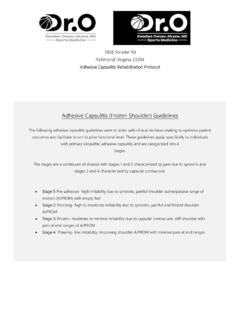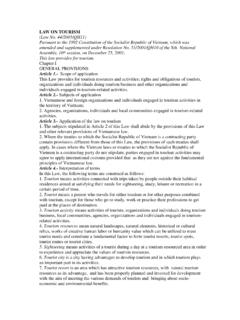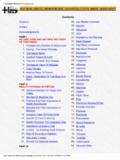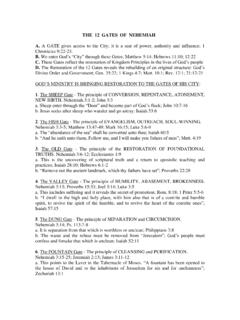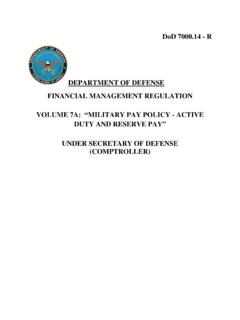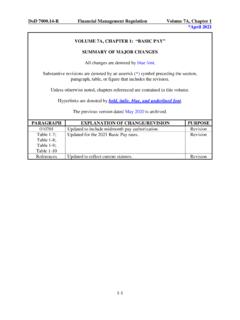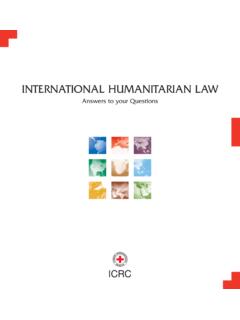Transcription of Annex I to the Commission delegated regulation ...
1 SENSITIVE. EUROPEAN. Commission . Brussels, XXX. [ ](2020) XXX draft Annex 1. Annex . to the Commission delegated regulation (EU) ../.. supplementing regulation (EU) 2020/852 of the European Parliament and of the Council by establishing the technical screening criteria for determining the conditions under which an economic activity qualifies as contributing substantially to climate change mitigation or climate change adaptation and for determining whether that economic activity causes no significant harm to any of the other environmental objectives *.
2 Distribution only on a Need to know' basis - Do not read or carry openly in public places. Must be stored securely and encrypted in storage and transmission. Destroy copies by shredding or secure deletion. Full handling instructions !db43PX. EN EN. EN EN. SENSITIVE. Annex I. Technical screening criteria for determining the conditions under which an economic activity qualifies as contributing substantially to climate change mitigation and for determining whether that economic activity causes no significant harm to any of the other environmental objectives 1.
3 AGRICULTURE AND FORESTRY. Growing of non-perennial crops Description of the activity Growing of plants that do not last for more than two growing seasons, including for the purpose of seed production. The activity is classified under NACE code in accordance with the statistical classification of economic activities established by regulation (EC) No 1893/2006. Technical screening criteria Substantial contribution to climate change mitigation 1. Protection of non-agricultural land with high carbon stock from land use change (a) Non-perennial crops are not grown on land with high carbon stock, namely on land that had one of the following statuses on the reference date referred to in Articles 29.
4 (3), (4) and (5) of Directive (EU) 2018/2001 of the European Parliament and of the Council1 and no longer has that status: (i) wetlands, namely land that is covered with or saturated by water permanently or for a significant part of the year;. (ii) continuously forested areas, namely land spanning more than one hectare with trees higher than five metres and a canopy cover of more than 30 %, or trees able to reach those thresholds in situ;. (iii)land spanning more than one hectare with trees higher than five metres and a canopy cover of between 10 % and 30 %, or trees able to reach those thresholds in situ.
5 (iv) peatland, unless evidence is provided that the cultivation and harvesting of the crop does not involve drainage of previously undrained soil. (b) Where growing of non-perennial crops includes the management of permanent grassland, the permanent grassland is maintained. 1. Directive (EU) 2018/2001 of the European Parliament and of the Council of 11 December 2018 on the promotion of the use of energy from renewable sources (recast) (OJ L 328/82, , p. 1). EN 1 EN. SENSITIVE. 2. Establishment of a Farm Sustainability Plan A Farm Sustainability Plan sets out the agricultural holding's strategy to contribute significantly to climate change mitigation by both reducing greenhouse gases (GHG).
6 Emissions2 and strengthening land carbon sinks (or, in case of saturation, maintaining land carbon stocks)3. The Farm Sustainability Plan: (a) describes the holding's biophysical environment and cropping system including information on land use change referred to in point 1;. (b) measures the holding's climate baseline, its average performance in terms of GHG. emissions and carbon sequestration in the five years prior to the start of the project;. (c) identifies the management practices with the highest potential to substantially contribute to climate change mitigation, and quantifies this potential contribution.
7 (d) identifies the management practices that ensure the compliance with the Do No Significant Harm' ( DNSH') criteria set out in (Section of) this Annex , where applicable. 3. Compliance with essential management practices To demonstrate that its activities contribute substantially to climate change mitigation and based on the information presented in the Farm Sustainability Plan, the agricultural holding consistently deploys all of the essential management practices listed in Appendix A to this Annex , except those that are clearly not applicable to that holding.
8 4. Farm records The agricultural holding keeps a yearly record of its climate performance, including: (a) information on the deployment of management practices;. (b) information on GHG emissions and removals that: (i) is based on best available data;. 2. The scope of emissions considered includes: methane emissions, including from enteric fermentation and manure management (produced during the storage and treatment of manure, and from manure deposited on agricultural land) and rice cultivation (in accordance with Intergovernmental Panel on Climate Change ( IPCC') reporting framework).
9 Nitrous oxide (N2O) emissions, including from manure management (including storage and treatment of manure) as well as direct N2O emissions from managed soils (in accordance with IPCC reporting framework) or other agricultural sources; carbon dioxide (CO2) emissions from on-farm fuel and electricity use; GHG emissions from Nitrogen (N). fertiliser production, including those from fuel and electricity use in such processes. 3. The scope of land carbon stocks and sinks includes the following carbon pools in the land use, land use change and forestry ( LULUCF') sector: above-ground biomass, below-ground biomass, soil organic carbon.
10 EN 2 EN. SENSITIVE. (ii) is consistent with the 2019 Refinement to the 2006 IPCC Guidelines for National Greenhouse Gas Inventories, including the good practices regarding the consistency between Agriculture, Forestry and Other Land Uses ( AFOLU') projects or activities and IPCC inventory guidelines4. 5. Verification of the yearly records and the Farm Sustainability Plan The information in the yearly records and the Farm Sustainability Plan is verified to be complete, correct and of high quality. That verification is carried out by an independent third-party body at the request of the agricultural holding at the beginning of the investment period and every three years thereafter.











